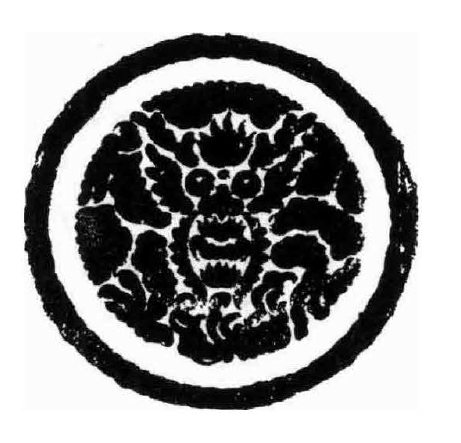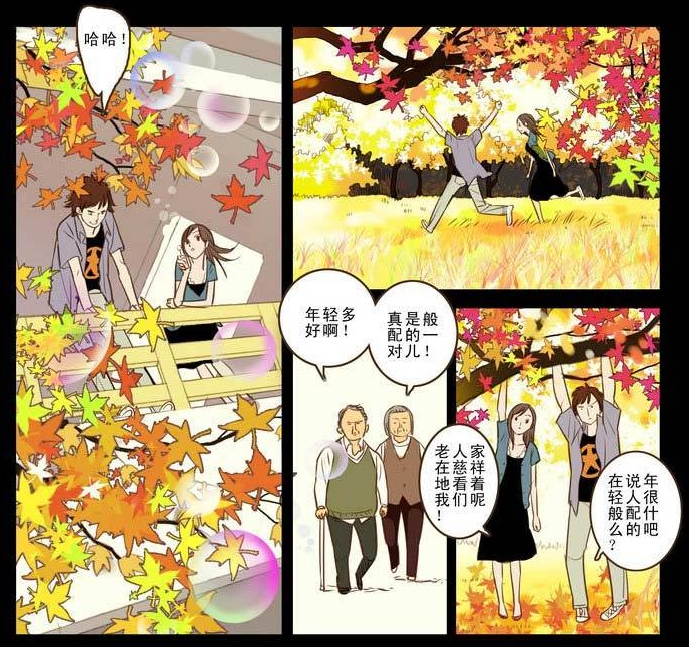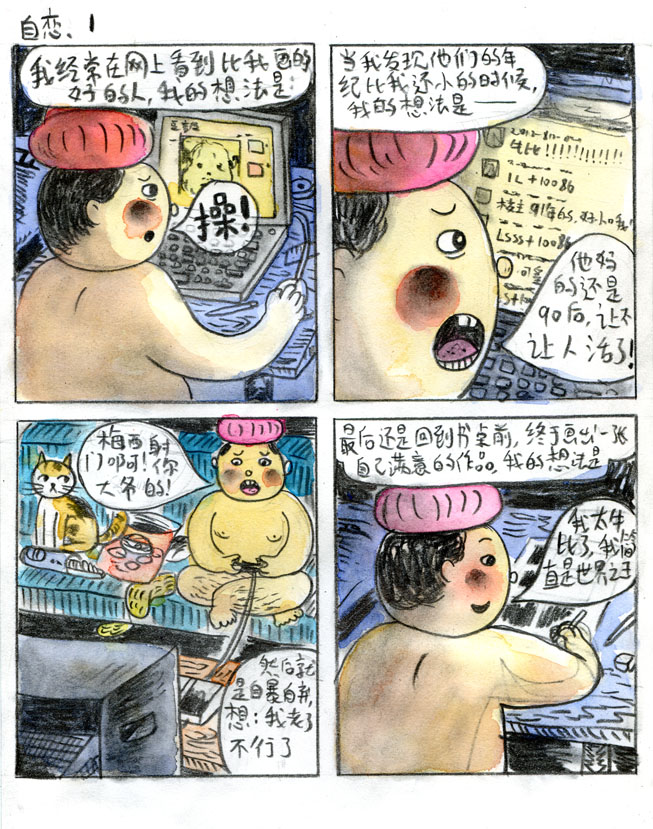This is the fifth chapter in my MA thesis, The Shanghai Manhua Society: A History of Early Chinese Cartoonists, 1918-1938, completed in December 2015 at the Department of Asian Studies at UBC. Since passing my defense, I’ve decided to put the whole thing up online so that my research will be available to the rest of the world. I’ve also decided to use Creative Commons Attribution-NonCommercial-NoDerivatives 4.0 International License, which means you can share it with anyone you like, as long as you don’t charge money for it. Over the next couple of days I’ll be putting up the whole thing, chapter by chapter. You can also download a PDF version here.
Since no former member of the Manhua Society has gone on record to explain why the Manhua Society gradually drifted apart in late 1927 and early 1928, I looked at the evidence left behind and reconstruct a plausible sequence of events, like a crime scene investigator using various clues the perpetrators left behind. That no Manhua Society member has seen fit to comment on the dissolution of the group seems strange, given the importance placed on its formation as, in the words of Bi Keguan, “the first civil cartoon society in Chinese history.”[1]
From the evidence, it seems that at least in part an internal schism (or schisms) broke the group apart from the inside. For one, the checkered relationship between Ji Xiaobo and Ye Qianyu seems to have colored his interactions with the rest of the group.[2] Lu Shaofei, on the other hand, seems to have had an especially close relationship with Ji up until late 1929, when the Ji seems to have mostly stopped publishing cartoons after being hired as a censor for the Ministry of Education.[3] Huang Wang also withdrew from the group, and the cartooning world in general in the spring of 1928 after a falling out with Zhang Zhengyu, publishing leftist cartoons two years later under various pseudonyms, while Ding Song, meanwhile, seems to have distanced himself from the group following an obscenity trial in late 1928.[4] Finally Hu Xuguang seems to have quit cartooning entirely in 1928, finding employment as set decorator in the film industry instead.[5]
At the same time, while it is true that four prominent members of the Manhua Society (Ji, Wang, Ding Song, and Hu) left the group to pursue other projects, as did other more minor members (Zhang Meisun and Cai Shudan), the bonds between the remaining five members of the Manhua Society (Ye, Huang, Zhang, Zhang, and Lu), however, seem to have grown even stronger throughout 1928, while at the same time allowing new collaborators to emerge. This reflects the fluid nature of membership in the Manhua Society that is attested to in their early meeting notes which note that, “…our group has adopted an open format and we welcome new comrades to join. There is no established procedure for soliciting new members, so interested parties are encouraged to contact us” 該會取公開態度、歡迎同志加入、但無徵求會員之手續、願入會者、可與該會接洽云.[6]
Shanghai Sketch I
To understand the breakup of the Manhua Society, we need to go back to the summer of 1927, just after the arrival of the Northern Expedition in Shanghai that spring. Having spent June and July of 1927 in Fuzhou, the provincial capital of Fujian (some 250 kilometers north of Xiamen) Ye found himself without a job. In December, his former boss in the Political Office of the Navy recruited him to create an illustrated magazine mocking British imperialism in support of a trade union strike at British-American Tobacco. Ding Song and Zhang Guangyu were both working at BAT at the time, Zhang having left his job as an industrial designer at the Chinese-owned Shanghai Mofan Factory in early 1927. Ye recruited Wang Dunqing to help create content for the magazine, focusing on the Opium Wars. Although the protest was ultimately suppressed by BAT management, the first issue of their magazine (which ultimately took the form of a broadsheet) seems to have been a success. According to Ye, however, just as they were preparing to publish a second issue, however, the KMT government stepped in and shut them down. [7]
This collaboration led to the creation of a new publication in late 1927, with the addition of the newly unemployed Huang Wennong, called Shanghai Sketch. “At the time, there were three of us working together: Huang Wennong provided the drawings, I was charge of doing all the odd jobs, and Wang Dunqing was in charging of editing.” 當時我們三人合伙,黃文農供畫,我管跑腿,王敦慶管編務.[8] ‘All the odd jobs’, in this case seems to mean taking care of printing and distribution. If one looks at the announcements posted in the Shenbao, and the actual publication itself, however, it is clear that Ye contributed a great deal of his own art, in addition to his other responsibilities:
A DATE HAS BEEN SET FOR THE NEW PUBLICATION SHANGHAI SKETCH
Manhua Society members, Wang Dunqing, Huang Wennong, Ye Qianyu, three united comrades from the world of art and literature, will be distributing a pictorial magazine that uses five-color rubber blanket offset printing. Every three days a new issue will be released under the name, “Shanghai Sketch.” The objectives of this periodical are to use words and pictographic art to encourage Chinese industry, beautify present day society, and conduct the revolutionary spirit. The contents of each issue will be one set of long-running humorous cartoons, and one set of short-running cartoons. The beautiful printing will include more than 20 satirical drawings, joke drawings, etc. while he text will include miscellaneous social commentary, short stories, interesting accounts, etc. Regarding the preparation of the pictographic materials and the selection of texts, there has already been over a year of preparation so the works we will publish are, without exception, vastly different from those published in normal pictorial magazines and three-day papers. This periodical will be published December 31, Year 16 [1927].
新刊上海漫畫出版有期
漫畫會會員王敦慶·黃文農·葉淺予·三君、集合文藝界同志、將發行一種畫報、以五彩橡皮版精印、每三日出版一期、命名“上海漫畫、”其宗旨在以文字及圖畫藝術、主吹國內工業、美化現有社會、傳導革命精神、逐期內容、有長期及短期滑稽活動畫各一套、美的裝束畫諷刺畫笑畫等約二十餘幀、文字方面、有社會雜評短篇小說及富有趣味之記載等、對於圖畫材料之籌備、文字風格之揀選、已達一年之久、故將來錄登作品、無不與尋常畫報及其他三日刊有所逈異、聞該報准定於十六年十二月三十一日出版。[9]
Five days later, the following notice appeared, which mentions that Ding Song and Zhang Guangyu were also attached to the project, in addition to the translators Wang Qixu 王啟煦 (pennames Wang Kangfu 王抗夫, Wang Yizhong 王藝鐘, Wang Jushi 王弆石, n.d.)[10] and Ji Zanyu 季贊育 (n.d.), and the artists Chen Qiucao 陳秋草 (1906-1988) and Fang Xuegu 方雪鴣 (n.d.) :


